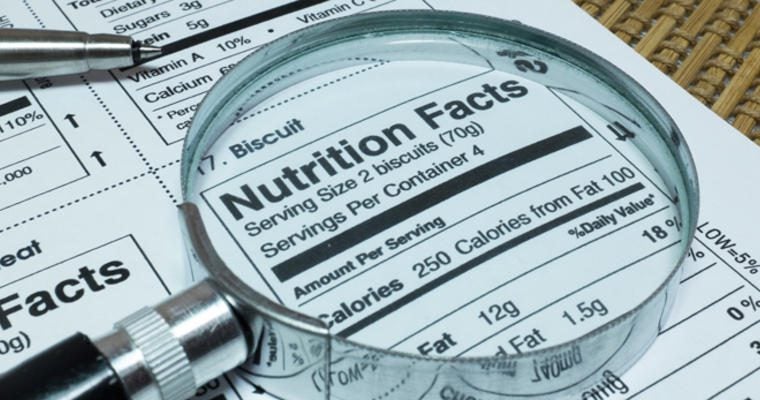The U.S. Food and Drug Administration (FDA) has proposed changes planned for the Nutrition Facts label for packaged foods to reflect the latest scientific information, including the link between diet and chronic diseases such as obesity and heart disease. The proposed label also would replace out-of-date serving sizes to better align with how much people really eat, and it would feature a fresh design to highlight key parts of the label such as calories and serving sizes.
Twenty years ago, the FDA mandated nutrition labeling for most food products under the Nutrition Labeling and Education Act (NLEA). Before that time, the inclusion of nutrition information was voluntary and primarily used for products designed for special dietary needs. But, as the incidence of heart disease and high blood pressure in the U.S. rose, nutritional values for calories and sodium became more common and prominent on nutrition labels. The FDA’s objective in codifying the process was to educate consumers and help them make informed choices at the point of purchase.
The goal remains the same, but times have changed, products have changed, and so have consumers’ needs. In the face of so much change, consumers are often confused by the values on nutrition labels. Which is part of the reason why the FDA has scheduled a revision of those labels.
“For 20 years consumers have come to rely on the iconic nutrition label to help them make healthier food choices,” said FDA Commissioner Margaret A. Hamburg, M.D. “To remain relevant, the FDA’s newly proposed Nutrition Facts label incorporates the latest in nutrition science as more has been learned about the connection between what we eat and the development of serious chronic diseases impacting millions of Americans.”
Calorie Labels
Since our nation continues to struggle with obesity, the change in the way the label displays calorie counts is most welcome, as it will help limit the calculations needed to determine the calories in finished total products. Now, many products list calories per serving—which are not necessarily the calories you will ultimately consume. Consider, for example, a 20 fl. oz. container of soda. The serving size may list 90 calories per 8 fl. oz. You would then need to multiply 90 calories x 2.5 (the number of 8 fl. oz. servings in one 20 fl. oz. bottle) to know that 20 fl. oz. will provide 225 calories.
Sugar Labels
Another area that needs clarification is the total grams of sugar. The Center for Science in the Public Interest would like to see a line on the label for “added” sugar. Right now the label reports total sugar, as some products have naturally occurring sugar as well as sugar added during processing, but they are grouped together for the final value. Added sugars contribute to the daily discretionary calorie allotment that, for men, equates to about 150 calories/day and, for women, 100 calories/day— valuable information for those watching their sugar intake and, ultimately, their weight.
Other Menu Labels
Other label items up for modification include daily, mandatory nutrients and sodium, the addition of potassium and vitamin D, and the possible elimination of calories from fat.
Clearly, consumers are looking to the label for that extra piece of information to assist them in making informed, confident choices. The same consumers who review nutrition facts when grocery shopping, may expect nutrition information on menus, as well, even if they opt for indulgence.




























